Our plan today was to spend the whole day at Zhujiajiao Water Town (朱家角水镇). As we intended to stay there till late at night, we did not rush to start the day and left our hotel at about 11am. The metro journey from Hailun Station to Zhujiajiao Station (need to change from line 10 to line 17 at Hong Qiao Train Station) took us about 1.5 hours. By the time we reached Zhujiajiao station, it was close to 1pm.
There are various options for getting from Zhujiajiao Station (Metro Line 17) to the Zhujiajiao Water Town itself, for eg. by taxis, by bus and by bicycle taxis. Of course, there is a cheapest option which is to walk. This is the most economical option and takes about 15-20 minutes. As we were not in a hurry, we decided to walk which allowed us to get a feel for the surrounding area.Instead of walking by the main road, we decided to take a detour and walked through a quiet residential area.
We were glad we walked by this way. Otherwise, we would have missed a visit to the Qing Dynasty Post Office. Established in 1903, it was once one of the major postal centers in Shanghai. Today, it's a charming historical landmark showcasing traditional architecture and a glimpse into the communication methods of the past. The refurbished building maintains its original structure, allowing visitors to step back in time and see vintage postcards and postal equipment.
We continued to walk through the narrow alleyway and finally reached the Water Town.
Often referred to as the "Venice of Shanghai," Zhujiajiao Water Town boasts a rich history and captivating beauty. Nestled in the Qingpu District, just a short journey from Shanghai's bustling center, this 1,700-year-old town promises a charming escape filled with ancient bridges, traditional architecture, and serene waterways.
Tucked away amidst the bustling streets and picturesque canals lies the Cheng Huang Temple (城隍庙), also known as the City God Temple. This Taoist temple boasts a rich history dating back to the 18th century. Originally located in a different town, it was relocated to Zhujiajiao in 1763.
We wandered through the bustling streets lined with shops selling local handicrafts, souvenirs, and traditional silk products. Of course, we had to try some of the local delights.
At the center of the Water Town, we saw a McDonalds restaurant as well as a Visitor Center.We then had our lunch at 小杨生煎.
We ordered the set lunch for two and it was cheap and good!After lunch, we bought a cup of iced coffee from Cotti Coffee and continued our exploration of Zhujiajiao.
There are a total of 36 bridges in the Water Town, each with its own unique design and story. The most famous example is the Fangsheng Bridge (放生桥), known for its charity boxes where people would donate to free animals.
We walked through more narrow alleyways after crossing Fangsheng Bridge to the other side of the river.
Zhujiajiao's story began in the 5th century AD as a small village. Its strategic location on water routes transformed it into a thriving center for trade and commerce by the Ming and Qing Dynasties (1368-1912).
The town's well-preserved architecture reflects its prosperous past. Traditional houses with black-tiled roofs and whitewashed walls line the canals, showcasing classic Ming and Qing Dynasty styles. Zhujiajiao is a labyrinth of canals, crisscrossing the town and creating a unique transportation system. Picturesque bridges, some dating back centuries, connect the various waterways, adding to the town's charm.
Kezhi Garden (课植园) the largest and most famous manor house garden in Zhujiajiao. It features rockeries, ponds, pavilions, and halls, offering a glimpse into the lives of wealthy merchants. However, it had closed when we were there.
Yuanjin Temple, which was built in 1341, is another popular landmark in Zhujiajiao. This Buddhist monastery, adorned with intricate carvings and statues, offers a serene escape and a chance to connect with the town's spiritual heritage.
Zhujiajiao Water Town (朱家角水镇) and Nanxiang Ancient Town (南翔古镇), where we went yesterday, each has its own unique features. Personally, we prefer Zhujiajiao as it has a lot more to see, eat and do.
Zhujiajiao's story began in the 5th century AD as a small village. Its strategic location on water routes transformed it into a thriving center for trade and commerce by the Ming and Qing Dynasties (1368-1912).
The town's well-preserved architecture reflects its prosperous past. Traditional houses with black-tiled roofs and whitewashed walls line the canals, showcasing classic Ming and Qing Dynasty styles. Zhujiajiao is a labyrinth of canals, crisscrossing the town and creating a unique transportation system. Picturesque bridges, some dating back centuries, connect the various waterways, adding to the town's charm.
Kezhi Garden (课植园) the largest and most famous manor house garden in Zhujiajiao. It features rockeries, ponds, pavilions, and halls, offering a glimpse into the lives of wealthy merchants. However, it had closed when we were there.
Yuanjin Temple, which was built in 1341, is another popular landmark in Zhujiajiao. This Buddhist monastery, adorned with intricate carvings and statues, offers a serene escape and a chance to connect with the town's spiritual heritage.
Zhujiajiao Water Town (朱家角水镇) and Nanxiang Ancient Town (南翔古镇), where we went yesterday, each has its own unique features. Personally, we prefer Zhujiajiao as it has a lot more to see, eat and do.
As it's approaching evening, we went to a starbucks store to wait for the sunset. Hopefully it's well worth the wait. To be continued.....


















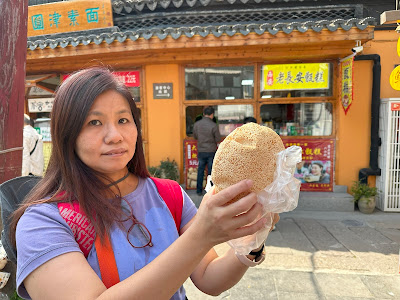






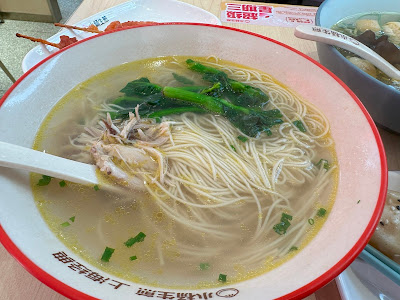


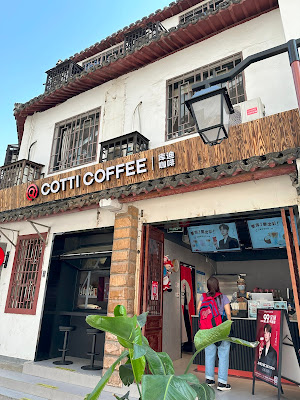




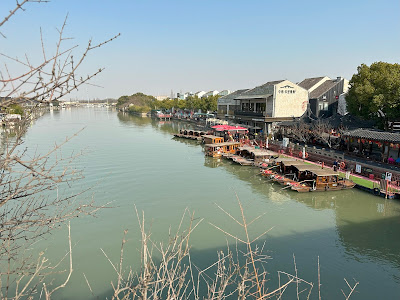







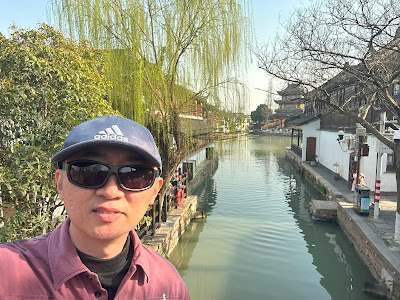














No comments:
Post a Comment